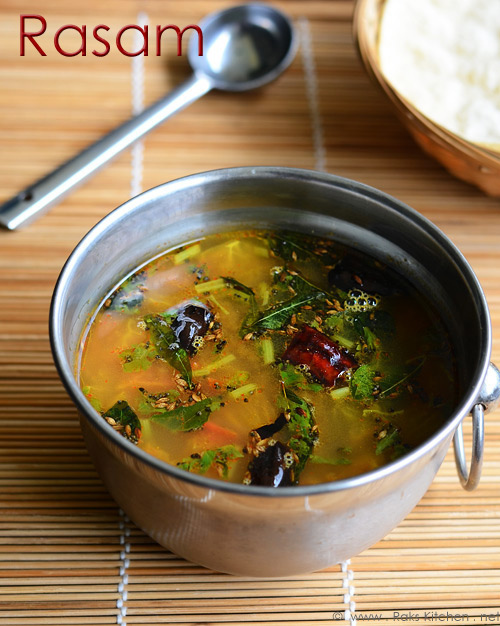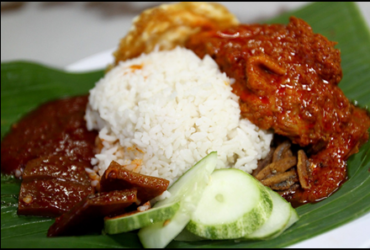Rasam: A Bowl of Wellness from India’s Culinary Heritage
By Sudarshan Ramanathan

In the ever-changing world of gastronomic pleasures, there exists a hidden jewel of old knowledge and scientific wonder – Rasam, the Indian Medicinal Soup. This apparently simple but profound dish has been a mainstay in South Indian cuisine for decades, and its extraordinary balance of flavors and ingredients makes it a genuine masterpiece of food science.
Rasam is more than a soup; it’s a healing elixir, a rich tapestry of flavors, and a monument to the long-standing relationship between Indian culinary traditions and the realm of science. Let’s take a tasty trip through Rasam’s scientific mysteries and cultural importance.
Science of flavors in Rasam
Rasam’s excellent taste profile is the product of a painstaking blend of herbs, spices, and other ingredients, all carefully selected to create a flavor symphony. One of the fundamental scientific ideas at work in Rasam is the concept of “flavor pairing.” This idea proposes that ingredients with complimentary or opposing flavors may enhance each other’s taste, resulting in a more nuanced and satisfying eating experience.
The key to making the ideal Rasam is finding the appropriate balance of flavors and ingredients. The concept of “Umami,” sometimes known as the fifth taste, is critical to this balance. Umami has a delicious and pleasant taste and is present in ingredients like tomatoes, garlic, and onions, all of which are utilized in Rasam.
In addition to Umami, Rasam combines the tanginess of tamarind, the sharpness of black pepper, the earthiness of cumin, and the freshness of curry leaves. This results in a brilliantly coordinated dance of flavors to the tongue and is also harmonic in terms of food chemistry. This balance is not a fortunate coincidence, but rather the result of a purposeful scientific approach to creating the ultimate Indian dish. Rasam is not only delicious, but it is also good for your digestion and general health.
Rasam’s Medicinal Properties

Tamarind
Rasam is a healing elixir as well as a gastronomic wonder. Rasam’s ingredients were chosen with particular health advantages in mind. Tamarind, for example, is renowned for its antioxidant benefits and capacity to assist digestion. It helps to balance the pH levels of the body, preventing acidity and heartburn. Tamarind’s antioxidants may help fight free radicals, which benefits general health. Furthermore, piperine, a bioactive molecule found in black pepper, a vital component of Rasam, might enhance the absorption of other beneficial nutrients in the body. This not only increases the taste of the dish but also its nutritional value.

Cumin
Cumin, another important component, is high in critical elements such as iron, which is necessary for keeping healthy blood and avoiding anemia. Furthermore, curry leaves, which are rich in vitamins and antioxidants, may provide some support to the immune system. Rasam’s ingredients combine to form a delicious and healthy combination respected in traditional Indian medicine for its therapeutic abilities. It’s no surprise that Rasam is often used as a natural cure for a variety of diseases.
Rasam is also well-known for its digestion supportive property. Rasam’s primary ingredients, tamarind, black pepper, cumin, and asafoetida, are powerful digestive aids. Tamarind, which is rich in dietary fiber, assists in easing constipation and promoting easy digestion. Furthermore, the presence of black pepper promotes the release of digestive enzymes, resulting in improved digestion and nutritional absorption. Cumin and asafoetida have carminative qualities, which help to relieve bloating and gas. According to research, the spices in Rasam actively assist healthy intestinal function.
Rituals and Cultural Importance
Rasam has great cultural importance in South India, in addition to its scientific wonders. It’s more than just a soup; it’s a way of life, served with pride and love. Rasam is often seen as a sign of consolation, served when one is feeling ill or as a welcome gesture for visitors. Rasam-making is a valued ritual in many South Indian homes, frequently handed down through generations.
The skills, family recipes, and the holy act of serving it are all part of a cultural history that emphasizes the intimate relationship between food and emotions in Indian society. The key skills involved include tempering, boiling and simmering, and seasoning. Tempering is the initial step where spices like mustard seeds, cumin seeds, and curry leaves are sautéed in hot oil or ghee. After tempering, the boiling and simmering stage begins.
The main ingredients, such as tomatoes, tamarind, and lentils, are added to the pot. The mixture is then cooked until the flavors blend together and the lentils are perfectly cooked. Once the Rasam is cooked, it is seasoned with a special blend of spices like turmeric, coriander, and black pepper. This final step adds depth and complexity to the dish.
In Indian culture, serving Rasam is often accompanied by certain rituals that enhance the dining experience. Rasam is typically served after sambar and before the main course, acting as a palate cleanser and digestion aid. It is best enjoyed hot and is usually served in small bowls or cups to retain its temperature and flavor. In some households, it is customary to sip Rasam directly from the bowl, which is believed to enhance the overall experience and flavor.
A Culinary Wonder with a Scientific Soul
Rasam, the Indian Medicinal Soup, is a work of culinary art that combines art, science, and culture. It’s a dish that tantalizes the taste senses while also healing the body and warming the heart. Rasam is a remarkable example of how traditional Indian cuisine has embraced science to produce a dish that is both delicious and healthy, from the chemistry of taste combination to the medicinal advantages of its ingredients.
So, the next time you eat Rasam, take a minute to enjoy the exquisite dance of flavors and the scientific knowledge that went into making this Indian delicacy. Rasam is more than simply food; it is a tribute to the harmonious interplay between the culinary arts and the marvels of science, and it continues to charm and heal with each drink.
References
- Image 1: https://rakskitchen.net/easy-rasam-recipe-how-to-make-rasam/
- Image 2: https://pixabay.com/photos/tamarind-juice-fruit-health-drink-5000522/
- Image 3: https://pixabay.com/photos/cumin-white-cumin-herbs-ayurveda-5377177/
About the author
 Sudarshan Ramanathan has completed his bachelor’s degree in Food Science and Technology from the Department of Food science and Technology, Arul Anandar College (Autonomous), Madurai, Tamil Nadu, India. During his bachelor’s, he received an award titled “Fr. Leo Correya Award – For Most Outstanding UG Student 2022”. Currently he is pursuing his Master’s degree in Food Science and Technology from the Division of Food Processing Technology, Karunya Institute of Technology and Sciences, Tamil Nadu, India. He is working on his master’s research work under the guidance of Dr. Sumit Sudhir Pathak in post-harvest technology for unexposed fruit waste products.He has also published a book in a self-publishing company. Along with that, he has published some articles in journals, popular articles in magazines and also written book chapters for Scopus indexed books. He won several ideathons and quiz competitions so far and also has presented his works in a few state, national and international conferences.
Sudarshan Ramanathan has completed his bachelor’s degree in Food Science and Technology from the Department of Food science and Technology, Arul Anandar College (Autonomous), Madurai, Tamil Nadu, India. During his bachelor’s, he received an award titled “Fr. Leo Correya Award – For Most Outstanding UG Student 2022”. Currently he is pursuing his Master’s degree in Food Science and Technology from the Division of Food Processing Technology, Karunya Institute of Technology and Sciences, Tamil Nadu, India. He is working on his master’s research work under the guidance of Dr. Sumit Sudhir Pathak in post-harvest technology for unexposed fruit waste products.He has also published a book in a self-publishing company. Along with that, he has published some articles in journals, popular articles in magazines and also written book chapters for Scopus indexed books. He won several ideathons and quiz competitions so far and also has presented his works in a few state, national and international conferences.




AMAZING article…!!!